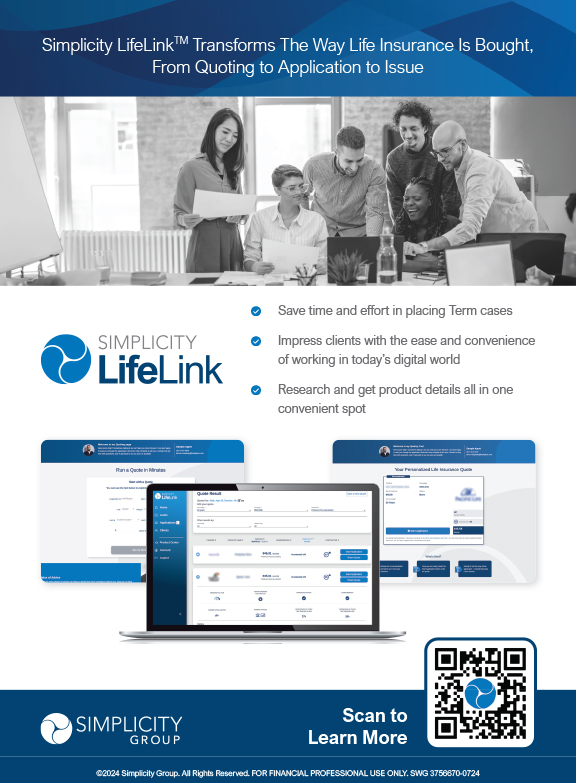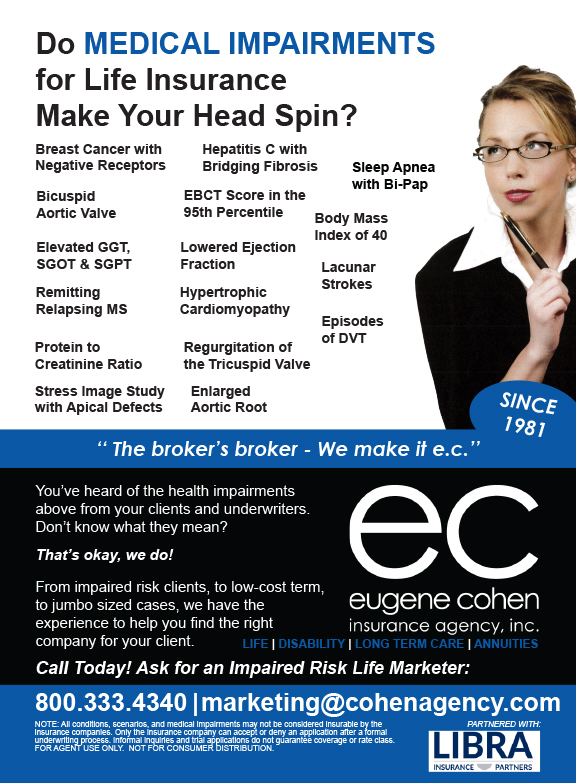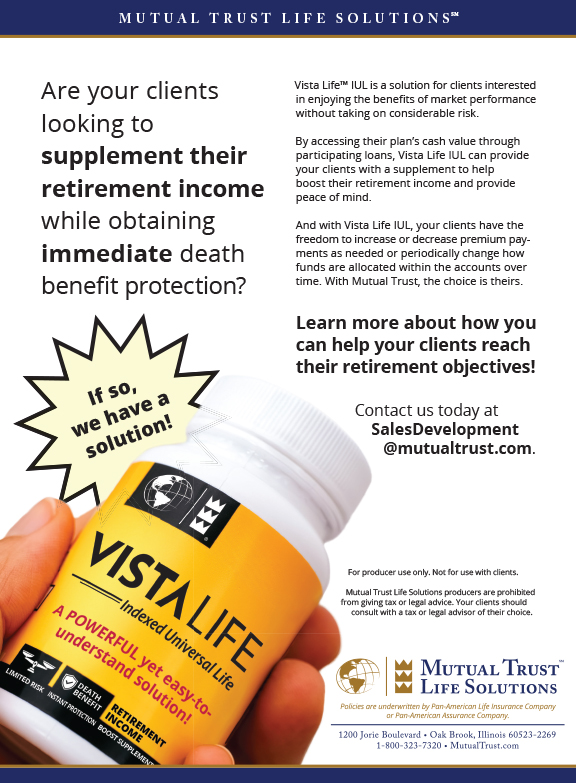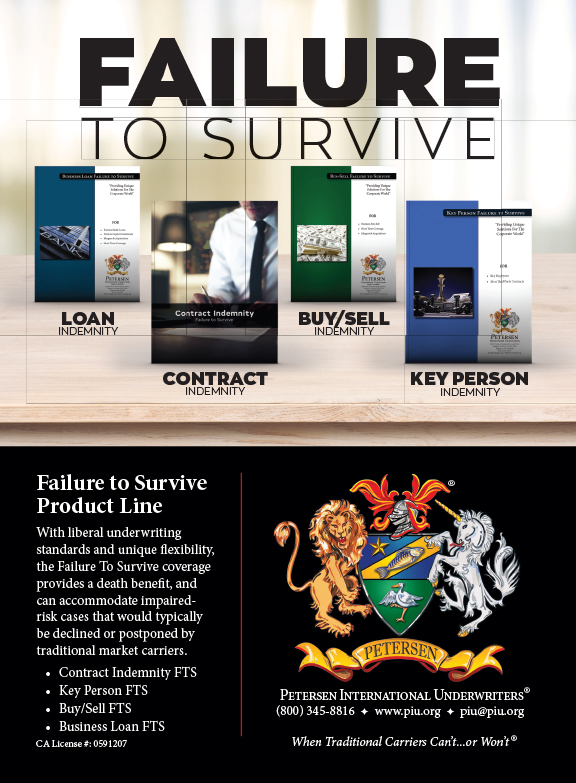Living costs money. From the first breath of life until the last, we must spend–or someone must spend for us–money to pay for the cost of living. Income must equal outgo, or as economists think of it, “cash flow.”
But three problems in life–death, disability and old age–render us unable to earn income to keep the cash flow in balance.
Fortunately, these problems have an antidote: replacement income. Life insurance can be used to finance care for surviving dependents. Retirement income plans will, if fully funded, provide a comfortable cash flow when a person stops working. And disability income insurance provides replacement cash flow for those who become disabled and unable to work.
This view–that life is a cash flow–has led to the conclusion that income planning should be the cornerstone of financial planning.
Further, we believe no comprehensive income plan is complete without an adequate amount of DI insurance. In this article, we’ll look at some ways to achieve this planning goal in today’s admittedly challenging DI market.
Yes, planners do face challenges in securing adequate amounts of DI coverage for highly-compensated persons. And some planners find availability a problem for clients who work in occupations many insurers deem unacceptable.
However, the market is not without hope. Recent DI product and underwriting developments have created answers to many recognizable disability financial planning needs. Specifically, new forms of high-limit DI are becoming available to provide producers with a market for the additional insurance not offered by the primary carrier.
Sold through networks of life and disability brokerage agencies, with the help of international capacities, these supplemental DI coverages are designed to imitate common DIs currently available from primary carriers. For instance, their definitions are identical to those in the base policies and their terms and conditions mirror those of the base products to the extent permitted by state regulations.
Hence, they provide a solution by virtually wrapping around the base DI contract. These new products can be used to "solve" a wide variety of DI problems. Here are four common situations where they can be used.
1. Most insurers use a sliding scale on issue/participation limits on individual DI plans. The result is that the higher the income, the lesser the percentage of income the DI company will insure. In addition, in today’s market, maximum DI issue limits hold coverage to modest amounts.
This is a problem because most income earners, regardless of income level, have spending commitments that consume 65 percent to 75 percent of normal income cash flow. Those commitments mean a prudent person should secure DI insurance in the amount of 65 percent to 75 percent of normal earned income. However, if upper income earners can secure DI at only 50 percent of their income, or perhaps only 40 percent or 30 percent, then they end up with
insufficient coverage.
Most DI agents are well aware of the problem. But they have been frustrated in recent years because they have often found it difficult to obtain suitable additional coverage. Now, with new forms of high-limit DI becoming available, a market is opening up to help meet the need.
2. Well-paid executives often suffer reverse discrimination because their firms’ group long-term disability plans have a benefit "cap" to keep the cost of the plan low.
The 60 percent to 70 percent of salary typically promised to employees is applicable to the $30,000 per year employee, but not the $300,000 per year employee. But excess disability coverages can be superimposed over the group LTD to provide the 60 percent to 75 percent of normal income coverage that most employees need.
Again, this coverage can be secured through the high limit DIs now on the market.
3. Many banks demand that their borrowers assign the benefits of existing DI coverage to secure the repayment schedule to the bank in the event of disability. But assigning the benefits this way robs the family of its critical protection should disability occur.
In this situation, the client can use supplemental and bank loan indemnification coverage to insure these special situations without impairing the personal disability estate. Such special risks can be insured separately, outside the personal program.
4. Good planning calls for business owners to establish a properly funded disability buy/sell agreement. The problem is that many insurers limit coverage to 80 percent of purchase price, have modest issue limits, and refuse to cover persons over the age of 57. But specialty DIs can help. These products can be structured to handle jumbo buy/sell plans of up to $200,000,000, in amounts up to 100 percent of purchase price, and include persons aged 57 and over. (An added plus: These plans do not reduce benefits starting at age 60.)
Let’s return to the original point: Using the concept that "life is a cash flow," it stands to reason that people must have income to match outgo when disabled and unable to earn.
If people attempt to cover such cash flow needs by invading savings, they are destroying their wealth accumulation and retirement income plans. They will not be collecting compound interest, and their future well-being will forevermore be dependent upon earned cash flow.
If, on the other hand, they borrow money to cover these cash flow needs, they will be spending intended future savings for the repayment of loans and interest. Wealth accumulations will stop, and retirement plans will be underfunded. This will restrict economic freedom.
Fortunately, people now have another option: They can include high-limit supplemental DIs in their financial plan. There may be additional costs for the coverage, yes, but it is affordable to most of the intended clients and the coverage will relieve concerns about short-term liquidity—thus freeing clients to concentrate on long-range investment strategies.






